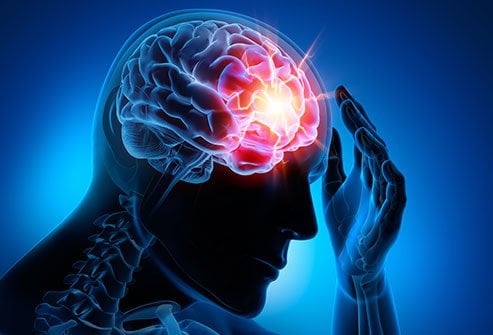Head injuries are more common than you might think, affecting individuals of all ages. Whether it’s from a minor bump on the head or a more severe accident, understanding the importance of getting imaging done after experiencing a head injury could be life-saving. This blog post aims to educate readers on why timely imaging is essential, the types of imaging available, and what to expect during the process.
Understanding Head Injuries
Head injuries can range from mild to severe. They occur when an external force injures the brain, skull, or scalp. Common causes include falls, car accidents, sports injuries, and physical assaults. The symptoms can vary widely, from mild headaches to severe cognitive disturbances.
Symptoms to Watch Out For
Even if a head injury seems minor, it’s crucial to monitor symptoms. Symptoms like headaches, dizziness, confusion, nausea, and even temporary loss of consciousness are red flags. These can indicate underlying issues that require medical attention.
Long-Term Consequences
Ignoring a head injury can lead to long-term consequences, including chronic headaches, memory problems, and even permanent brain damage. Such outcomes underscore the importance of seeking medical advice and proper diagnostics immediately.
Types of Head Injuries
Knowing the types of head injuries can help in understanding why imaging is necessary. Here are some common types:
Concussions
Concussions are the most common type of traumatic brain injury. They occur when a blow to the head causes the brain to move rapidly within the skull. Symptoms can be immediate or delayed, making imaging vital for proper diagnosis.
Contusions
A contusion is a bruise on the brain, often resulting from a direct impact. Unlike concussions, contusions may cause bleeding and swelling, which can be detected through imaging.
Skull Fractures
A skull fracture involves a break in one or more of the skull bones. This type of injury can be particularly dangerous if bone fragments penetrate the brain tissue, making immediate imaging crucial.
The Role of Imaging in Diagnosis
Imaging technologies like CT scans and MRIs are pivotal in diagnosing the extent of a head injury. These tools provide detailed images of the brain and skull, helping doctors identify issues that may not be visible through a physical examination.
CT Scans
CT (Computed Tomography) scans use X-rays to create detailed images of the brain. They are quick, making them ideal for emergency situations. CT scans can detect bleeding, swelling, and fractures effectively.
MRI Scans
MRI (Magnetic Resonance Imaging) scans use magnetic fields and radio waves to produce detailed images of the brain. They are particularly useful for detecting soft tissue damage and subtle brain injuries. If you’re curious about where you can get an MRI, a simple Google search like, “MRI St. Louis” or asking your doctor for a recommendation is a great starting point.
When to Choose Which
While both CT and MRI scans are effective, the choice depends on the nature of the injury and symptoms. CT scans are commonly used in emergency settings for their speed, while MRIs are preferred for more detailed imaging.
What to Expect During the Imaging Process
Understanding the imaging process can alleviate any anxiety you may have. Here’s a step-by-step guide:
The Initial Consultation
Before imaging, you’ll have a consultation with a healthcare provider who will assess your symptoms and medical history. This step helps determine the most appropriate imaging method.
The Imaging Procedure
Whether it’s a CT scan or an MRI, the procedure is generally straightforward. You’ll be asked to lie down on a table that slides into the imaging machine. The process is painless, although MRIs can be noisy and take longer.
Post-Imaging Analysis
After the imaging, a radiologist will analyze the results and share them with your healthcare provider. This analysis is crucial for diagnosing the injury and planning subsequent treatment.
Benefits of Early Imaging
Early imaging can make a significant difference in the outcome of a head injury. Here are some benefits:
Accurate Diagnosis
Imaging provides an accurate diagnosis of the type and extent of the injury, enabling timely and appropriate treatment.
Preventing Complications
Early detection of issues like bleeding and swelling can prevent complications, reducing the risk of long-term damage.
Peace of Mind
Knowing the exact condition of your brain and skull can provide peace of mind, allowing you to focus on recovery without unnecessary worry.
Risks of Delaying Imaging
While it might be tempting to wait and see if symptoms improve, delaying imaging can have severe consequences.
Worsening Symptoms
Untreated head injuries can lead to worsening symptoms, including severe headaches, cognitive issues, and even seizures.
Increased Risk of Permanent Damage
The longer a head injury goes untreated, the higher the risk of permanent brain damage. Early imaging can mitigate these risks by facilitating prompt treatment.
Higher Treatment Costs
Delayed diagnosis and treatment can lead to more complicated and expensive medical interventions down the line. Early imaging helps avoid these additional costs.
How to Prepare for Your Imaging Appointment
Preparation can make your imaging experience smoother. Here are some tips:
Gather Medical History
Bring any relevant medical records, including previous head injuries, medications, and allergies. This information helps healthcare providers make informed decisions.
Follow Pre-Appointment Instructions
You may be asked to avoid eating or drinking before the appointment, especially if sedation is needed. Follow these instructions carefully.
Arrive Early
Arriving early gives you time to complete any necessary paperwork and mentally prepare for the procedure.
Frequently Asked Questions About Head Injury Imaging
Many people have questions about the imaging process. Here are some common ones:
Is Imaging Always Necessary?
While not always mandatory, imaging is highly recommended for persistent or severe symptoms. Consulting a healthcare provider can help determine if imaging is necessary.
Are There Any Risks?
Imaging procedures like CT scans involve minimal radiation exposure, while MRIs use magnetic fields. Both are generally safe but consult your provider for specific concerns.
How Soon Will I Get Results?
The time to get results varies, but most imaging centers provide results within 24 to 48 hours. Your healthcare provider will discuss the findings with you promptly.
The Bottom Line
Getting imaging done after a head injury is not just a precaution; it’s a crucial step in ensuring your long-term health and well-being. From accurate diagnosis to preventing complications, the benefits far outweigh any potential drawbacks. If you’ve experienced a head injury, don’t wait—consult a healthcare provider and consider getting a CT or MRI scan. Your health is worth it.








Leave a Reply
You must be logged in to post a comment.